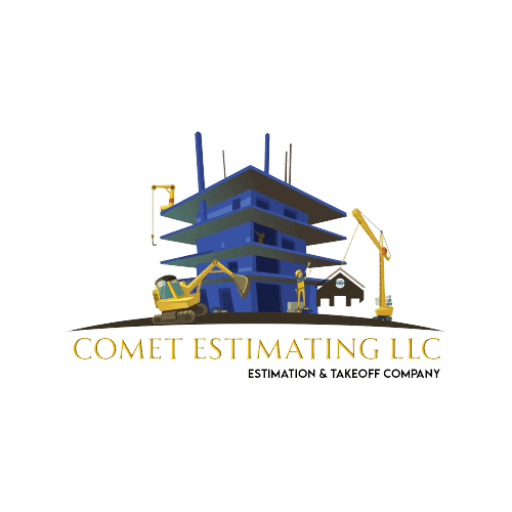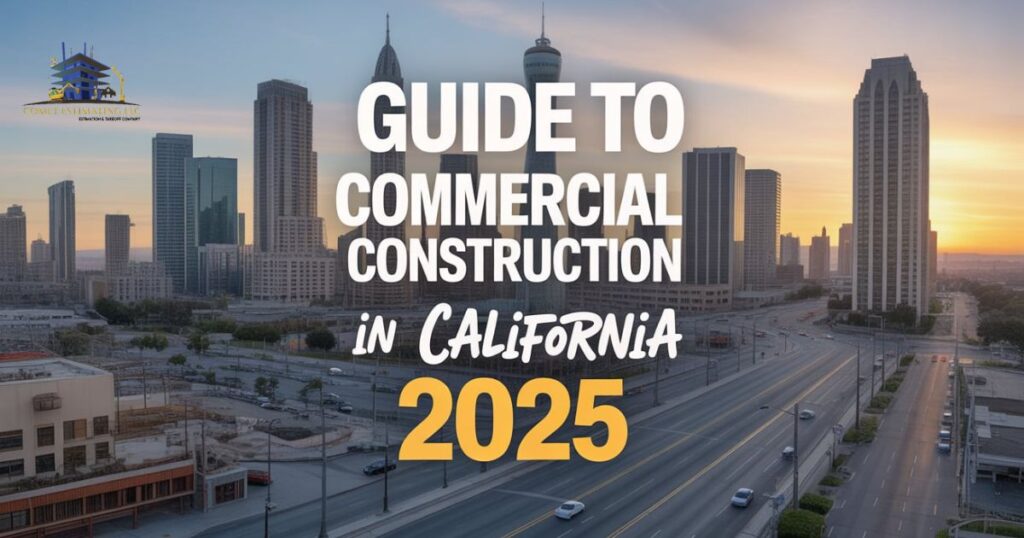Knowing the commercial construction cost in California for 2025 is vital for investors, developers, and contractors who are planning future phases of projects. With rising construction costs, a fluctuating price for building materials, and continuously changing regulations, preparing your budget for construction is more crucial now than it has ever been. The dynamism of the real estate market for real property in California adds a new dimension of complexity, particularly in cities like Los Angeles and San Francisco.
The following guide will cover everything from the commercial construction cost, per square foot through local regulations in cost savings techniques. If you’re planning to build an office or warehouse, knowing the costs associated with commercial development will prevent surprise costs and enhance the value of your purchase.
What Is Commercial Construction?
The term “commercial construction” is the creation of structures used for commercial uses. They include warehouses, stores, offices, health facilities, and other structures that are designed to generate revenues or aid in commercial operations.
This kind that is designed more complicated than the residential design. It usually requires massive construction, stringent technological advancements in construction codes, as well as massive investments. From initial plans to the completion of commercial projects, it requires expert coordination between various fields.
Average Commercial Construction Cost in California 2025
By 2025, the median cost for commercial buildings in California will be contingent on what type of construction and where it is located and the availability of labor as well as the materials available. Here is an overview of the typical costs per square foot:
| Building Type | Average Cost per Sq. Ft |
| Office Buildings | $300 – $475 |
| Retail Stores | $275 – $450 |
| Warehouses/Industrial | $150 – $275 |
| Medical Centers | $450 – $700 |
| Hotels | $500 – $800 |
| Restaurants | $350 – $600 |
Key Factors Affecting Commercial Construction Cost
There are a variety of elements that influence the cost of building commercial buildings in California. The geographic location is a crucial element in cities such as Los Angeles or San Francisco generally, which is more expensive due to the high price of labor as well as the space. The building’s dimensions and appearance also influence the complexity of the building and its demands on resources, which can cause higher prices.
Other aspects to be considered include the availability of labor and materials, as well as the design preferences. Designing unique designs, usually such as this, can lead to higher cost of engineering and architecture. The permit requirements as well as other requirements for regulatory compliance, particularly in California can significantly impact the cost and time. Environmental and sustainability compliance initiatives are beneficial, but they could result in costs beyond the initial. California’s green building rules (e.g. Cal Green) requires sustainable practices.
California-Specific Regulations to Consider
California is one of the most stringent building laws within the U.S., making compliance crucial for every construction project that is designed for commercial purposes. For example, Title 24 Energy Standards requires the construction of structures which are efficient in energy use, which involves installing solar panels and sophisticated cooling and heating systems. Furthermore the CalGreen Code encourages sustainable construction materials and designs that use less water.
Builders also must adhere to earthquake safety standards due to the region’s nature that is prone to earthquakes in the States. Zoning laws limit the types of structures allowed in certain areas, and could influence the design if they are developing. Also, making sure that buildings comply with ADA (Americans with Disabilities Act) standards is vital for accessibility and accessibility. * Commercial structures are required to be accessible and adhere to state and federal laws.
Cost Estimation Tips for 2025
- Break down costs The project will be divided into phases The phases include Design, Permitting construction Site preparation, and the post construction phase.
- Make use of the previous information: Take the previous projects as a frame of reference, which could be adjusted in time to take into account the rising costs of materials and inflation.
- Cost Estimators Use Pro estimators use programs like RSMeans and ProEst to give accurate estimates.
- Inflation estimates a rise in the year to 46% of the price of labor and material in California.
- Contingency funds 10 percent of your budget for circumstances that are not planned for.
How to Save Money Without Compromising Quality
- Value Engineering: Examine options for design and materials that help reduce costs while preserving the quality.
- Modular building utilizing prefabricated components can drastically reduce the costs of the time required for construction.
- Wholesale purchase: Buying products in bulk or working with suppliers for discount.
- Achieving Successful Project Management: Stop delays and rework by ensuring there is a clear communication and coordination.
- Make use of technology to improve building information: Modeling (BIM) to identify problems with the design before they cause costly problems.
- Sustainable Design: Incorporate strategies that are energy efficient to cut down on cost of operation in the long run.
Hiring the Right Commercial Construction Contractor
The choice of the best contractor is among the most crucial decisions during any construction project. Begin by making sure that they’re licensed and insured as per California’s laws. California. After you’ve reviewed their portfolio, ask their previous clients to gauge the quality of their work.
An unambiguous and consistent communication system along with security in the financial realm are important factors in determining the trustworthiness of a contractor. Make sure that contracts are documented properly with timeframes and deadlines of projects and the dates of delivery and payment conditions. This helps to prevent conflict and ease the completion of the project.
Future Trends in Commercial Construction (2025 & Beyond)
Green Building Technologies
We could see an increase in adoption of zero-energy buildings, smart HVAC systems, and the use of solar energy.
3D Printing & Prefabrication
Many businesses are embracing 3D printed components and modular construction in order to save time and money.
AI and Automation
Artificial Intelligence can be used to plan as well as managing risk. It is also used to keep track of the development of the construction process.
Smart Buildings
Internet of Things-integrated commercial buildings with controlled lighting, HVAC, and security are gaining popularity.
Labor Shortage Solutions
Robots and automated bricklaying as well as remote-based software to help manage projects are expected to assist in helping combat the shortage of workers.
Conclusion
Knowing the environment of commercial construction cost up to California 2025 will require a deep knowledge of requirements, costs and the changes. With rising requirements, increasing costs, and the explosive growth of technology, it’s essential that all stakeholders are informed to make informed choices. If you’re considering the building of the first retail store, office warehouses and warehouses, making plans ahead, and precise budgeting and hiring the top experts is crucial to be sure the project is successful. At COMET estimating we provide expert estimation and takeoff services for your upcoming projects, as helping you save time, money and get accuracy for success.
Frequently Asked Questions
Q1: What is the average cost to build a commercial building?
Ans: State of California costs for construction are between $275 and 800 dollars per square foot, based on the design and the structure of the area.
Q2: How to calculate the cost of a commercial building?
Ans: Divide the cost into various categories such as the acquisition for land, building permits for construction materials, and the post-construction. The area is divided by the cost of each square foot.
Q3: How to estimate commercial construction costs?
Ans: Use one of the top estimation software featuring historical data and expert estimation tools. Consider the effects from permits, inflation, and regional cost differences.
Q4: Is it cheaper to buy or build a commercial building?
Ans: It’s typically more efficient and less expensive at the beginning, however construction also gives you the chance to modify and enhance infrastructure. This could lead to savings in the long run, as well as an increase in the return on investment.
Q5: How much does it cost to build a 20,000 sq ft warehouse?
Ans: With a price of between $150 and $275 per square foot, building the area that is 20,000 sq. feet would run between the cost of $3million to $5.5 million by 2025.
Q6: Is commercial construction worth it?
Ans: It is possible, as long as it is used in a systematic manner. It provides the opportunity to earn money over time, and offers the option of personalization, as well as increasing its value especially in the highly sought-after California marketplace.




